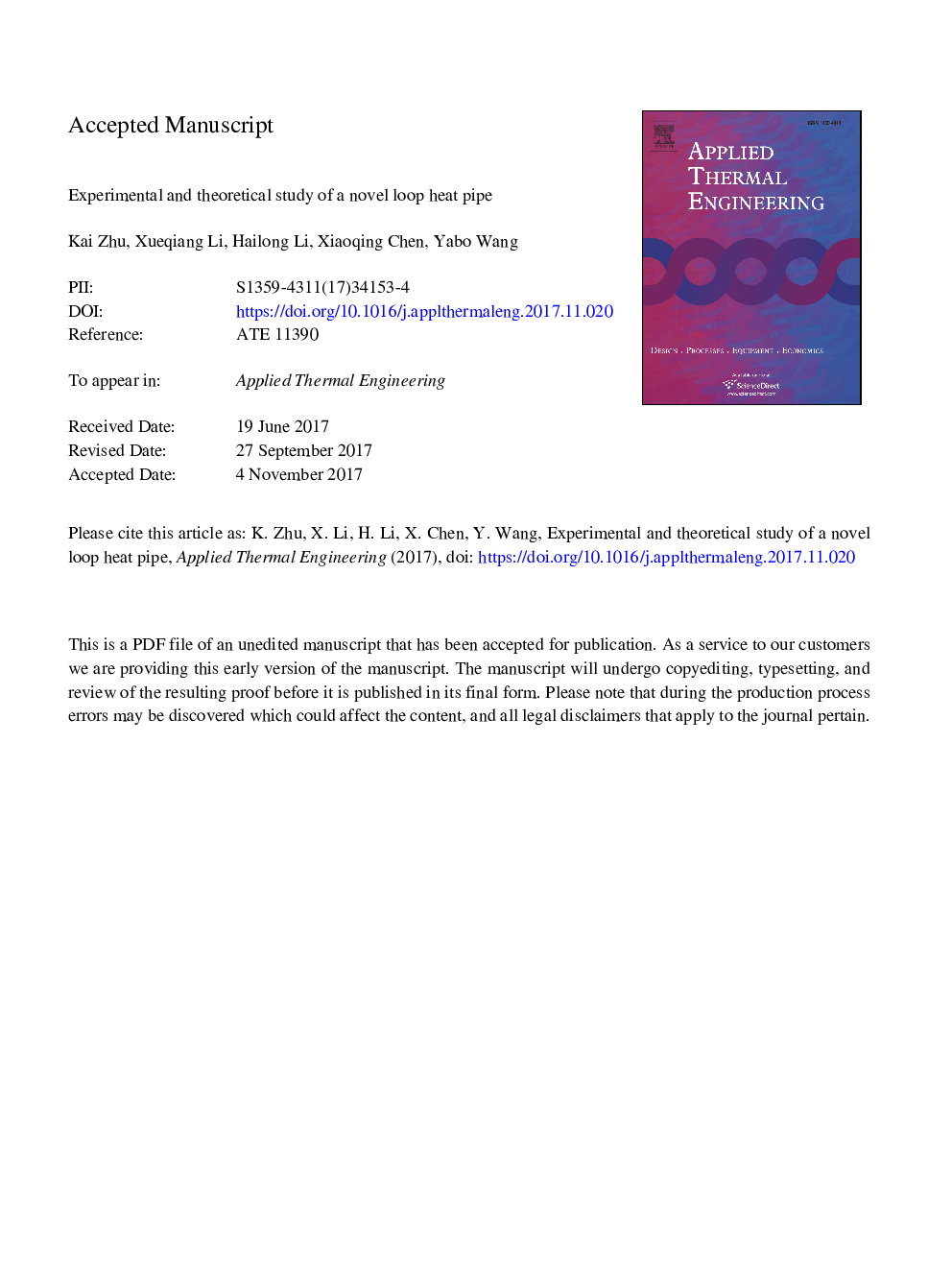| Article ID | Journal | Published Year | Pages | File Type |
|---|---|---|---|---|
| 7046375 | Applied Thermal Engineering | 2018 | 39 Pages |
Abstract
In order to reduce the heat leakage from the evaporator and achieve a longer transport distance, a new type of loop heat pipe (LHP) has been proposed based on a hypothesis that the circulation of working fluids is driven by not only the capillary head, but also the pressure head due to evaporation. In the evaporator, the wick is separated from the heating surface by a chamber, which can effectively use the pressure head generated by evaporation. In this work, a prototype of such a LHP was studied experimentally and theoretically. In order to understand the mechanism of operation, a new mathematical model was established. Comparing the simulated results with the experimental data about the operation temperature, a good agreement was observed that the average absolute deviation and the maximum absolute deviation were in ranges of 0.67-1.21â¯Â°C and â1.3 to 6â¯Â°C, respectively. With the validated model, the two driving forces were investigated. Results showed that the ratio of the pressure head of evaporation to the capillary head was in a range of 59-54% corresponding to heating powers from 30â¯W to 110â¯W. It confirms that the pressure head due to evaporation plays an important role in the circulation of working fluids.
Related Topics
Physical Sciences and Engineering
Chemical Engineering
Fluid Flow and Transfer Processes
Authors
Kai Zhu, Xueqiang Li, Hailong Li, Xiaoqing Chen, Yabo Wang,
